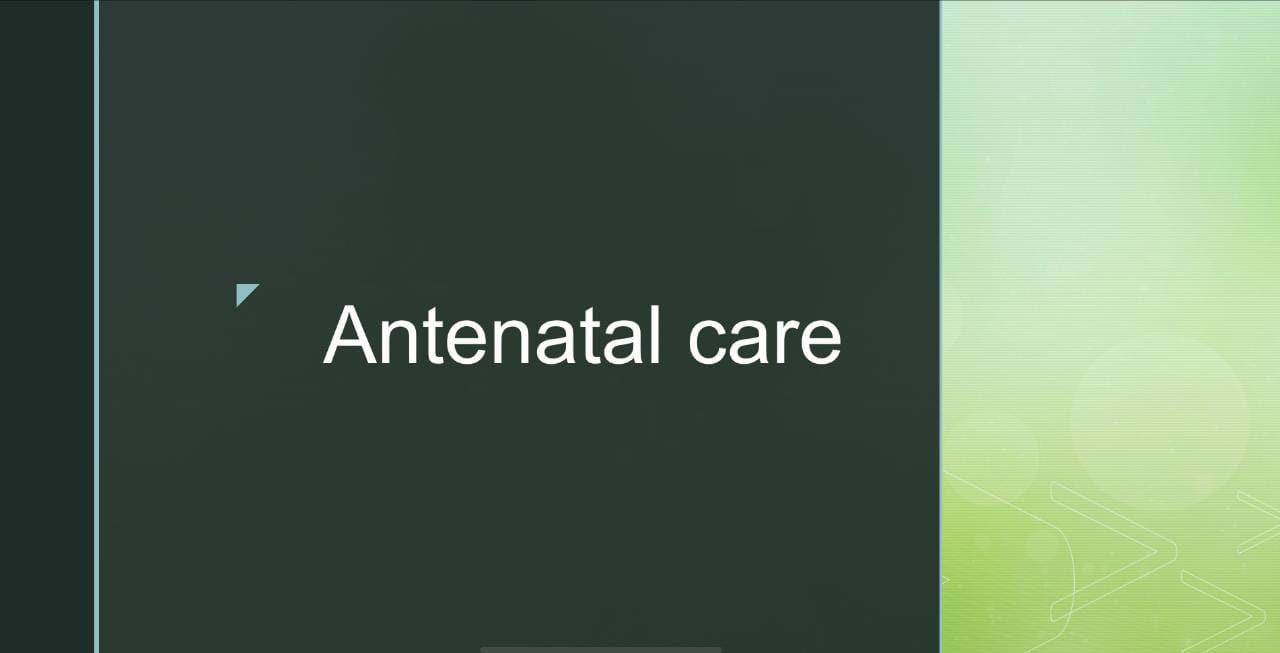Antenatal care is the routine control of pregnant women. Antenatal care is essential for the well being of pregnant lady and the fetus. Antenatal care is started before 12 weeks of gestation (known as early gestational period). It is done for screening both mother and the child to determine the risk factors associated with pregnancy. In India, minimum of 4 antenatal visits is recommended according to the government.
Objectives of antenatal care:
Antenatal care is required to screen high risk pregnancies, for detection of complications, in order to educate mother for proper care of herself and her child, to promote preventive care, to maintain and promote health status of the woman. It also aims to motivate the woman about family planning and motivate her to discuss about her concerns and fears related to the pregnancy.
First antenatal visit:
Mother and child protection card (MCP card) is made first with the aim of –
• Risk analysis of pregnancy
• Knowing about health condition of mother and fetus.
• Assess gestational age and expected date of delivery i.e., EDD (by taking history of last menstrual period).
• Performing baseline investigation
• Promoting institutional deliveries father than home deliveries.
At first antenatal visit history taking of woman is done which includes history of past pregnancies, present pregnancy, menstrual cycle, family history, personal history, medical or any surgical history, drug inake history.
General Physical Examination of lady is conducted which includes examination of height, weight (for calculation of BMI), nutrition status of lady. It is also done to check the edema in legs of lady whether it is physiological (pitting seema of ankles which subsides after rest) or pathological (edema above the ankles upto to knees which doesn’t subside on rest). Pulse rate and blood pressure of lady is also examined. Heart and lunga are auscultated to look fir any abnormal findings. Thyroid and breast examination are also performed.
Internal examination of lady is done by per speculum examination and per vaginal examination.
Obstetric examination is done by fundal height measurement to check if the calculated period of gestation corresponds to the size of uterus. It is done with ulnar side of hand when the lady is lying in dorsal position with knees flexed. It is started from the punia symphysis till the fundus of uterus.
Routine investigations on 1st visit:
• Hemoglobin and hematocrit
• Blood glucose level
• Blood group
• Urine routine and microscopy
• Urine culture
• HBs Ag testing
• HIV test
• VDRL test
• Routine USG (level -2 scan)
• Serum TSH
• Screening for sickle cell anemia
• Screening for thalassemia trait
• Detection of Rubella antibodies
• Screening for aneuploidy
At subsequent visits (after the 1st visit) pregnant lady is inquired of any complaints and perception of fetal movements felt by her. General physical examination is also conducted at each antenatal visit. General investigations like urine routine and microscopy and hemoglobin (in each trimester ) is performed. Obstetric examination is also needed to record the fetal growth.
Apart from this, woman is given dietary advice to have a health and balanced diet consuming all the minerals and vitamins required in proper proportion. She is advised to intake extra 350 kcal per day in her 2nd half of pregnancy. Protein requirement increases to about 1.5 g/kg/day. Calcium requirement almost doubles and reaches to about 1000 mg/day. As iron and folic acid requirements also increases she us provided with iron and folic acid supplements in her 2nd trimester (it is not given in 2st trimester due to morning sickness and due to less need in 1st trimester) and continued throughout pregnancy. Each tablet contains 60 mg of elemental iron and 500 micrograms of folic acid in it.
Contributor – Medico Eshika keshari





Helpful